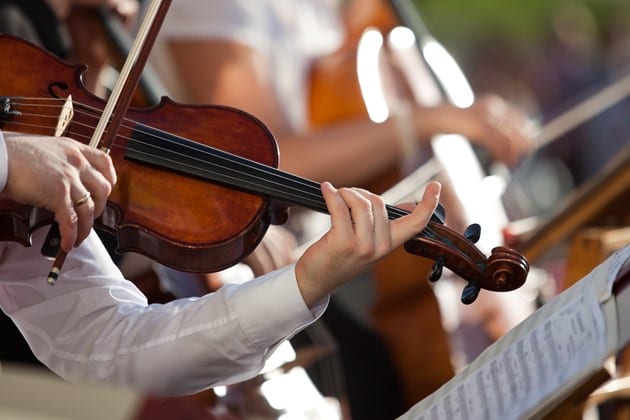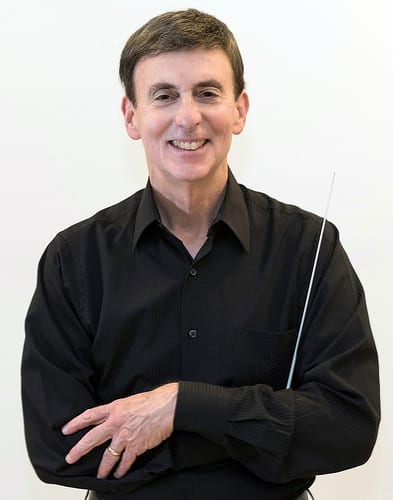
Preparing for an Audition
Auditions have often proven to be the cause of anxiety. Careful and thorough preparation is surely the key; this preparation includes resumes, cover letters, dress, and general presentation. Whether auditioning for a full-time professional orchestra, regional orchestra, university, conservatory, or summer festival, there are several factors that are part of the process that bear close examination.
RESUME
Resumes are best presented in one page. Committees don’t have the time or interest to review multiple pages. I suggest organizing a resume in the following manner:
(BASIC INFORMATION)
Name, instrument, physical address, e mail address, cell phone number. You may include both your school address and your home address.
EDUCATION
list from most recent; school, years that you attended, degrees earned, major teachers
PROFESSIONAL EXPERIENCE
Orchestras, chamber music, solo; years that you played
SCHOOL ENSEMBLES
Orchestras, chamber music, years that you played
SUMMER FESTIVALS
Names of the festival, years that you played
SPECIAL AWARDS
Solo opportunities with orchestra (can include high school experiences)
Prizes or awards
COVER LETTER
A cover letter, when applicable, should be simple and direct. Be sure that there are no misspellings or grammatical errors. Note that “principal clarinet” is correct, “principle clarinet” is not. Note that if English is not your native language, be sure to have someone proofread your letter for any errors in grammar, spelling, or usage. Be careful to proofread everything, as spell check can change a misspelling to the wrong word.
Here is an example of a cover letter:
Dear Sir:
I am applying for the position of Principal Clarinet of the Main Street Symphony. Attached is a copy of my resume.
Please let me know if you require any additional information. Thank you.
Sincerely,
PREPARATION
If you have a choice of a solo piece, play something with which you are comfortable and can make a solid first impression. Most experienced committee members can tell how you play within seconds, so find something that you can start with confidence and that shows you off in the most positive light. Select a piece which is standard, that the committee is likely to know, or at least a piece with a style with which the committee can easily identify. Variety is desirable – find a piece with contrasting lyrical and technical passages rather than one with all the same kind of character. Pieces like the Tchaikovsky or Sibelius Violin Concertos are just two examples of works which contain these kinds of contrasts.
As you are preparing your solo, plan your phrasing. It’s not enough to “be musical”. Music has a natural ebb and flow, with points of tension and relaxation. In general, leading to and leaning on appoggiaturas and then releasing is a good starting point in this process. Sing the phrase and see where the phrase naturally goes. In the classical style, crisp articulation is helpful in establishing the character of the music. I like to say that 90% of phrasing is planned and 10% is spontaneous.
Find the atmosphere and character of each section and phrase. Search for words that are inherent to the mood of what you’re playing. Calm, tranquil, majestic, stormy, ominous, mysterious, joyful, playful, mischievous – these adjectives and many more can help you find what you are seeking to portray in your playing at various points of the music.
There are two elements in music which are completely objective to the listener, namely rhythm and intonation. Subjective areas may include sound quality, interpretation, and articulation choices. The basics, time and pitch, are irrefutable, and must be the foundation of your preparation. Using your practice time wisely is essential. If, for example, the piece that you are preparing has staccato passages, find etudes or patterns that will reinforce your ability to play these passages. If your piece contains chromatic scales, a specific scale, or octaves, do the same. Slow practice, playing technical passages in different rhythms, etc. can help build the basics of your technique. Use the metronome to build to your desired tempo.
Dynamics are vital elements of music but are subject to interpretation. Dynamics must be thought of as qualitative as opposed to quantitative. The character of the music that you are portraying will dictate the proper volume of sound and the direction of the phrases. Note that the dynamics of any piece are general guidelines and are not to be taken as absolutes. Pacing of crescendos and diminuendos, finding an appropriate interpretation of accents, and playing with suitable articulations are just a few of the variables of dynamics.
Contrast is a very important element in music. For example, if a passage is marked piano diminuendo to pianissimo, start the piano loud enough to make an effective diminuendo. If that means starting the passage louder than “piano”, note that the amount of volume is a qualitative rather than a quantitative decision, as again there are no absolutes in dynamics.
As you make your choices for tempo and phrasing, use the metronome to help establish a desired tempo. The first movement of a Mozart concerto played too slowly will take away from the charm and character. The same can be said of a second movement, which then becomes dull and uninteresting. In preparing an excerpt such as the Scherzo from Mendelssohn’s Midsummer Night’s Dream, find a tempo that is suitable, and practice a little faster and a little slower, should the committee ask you to play a second time at a different tempo. Dotted quarter = 88 is an acceptable tempo, but 84 and 92 are also possible. Use the metronome creatively to help form your interpretations.
Practice time is valuable, and it is necessary to find ways to use it to your best advantage. Before tackling excerpts, be sure that you have played your scales and arpeggios, as well as etudes which support the techniques that you will be playing for these excerpts. An example of what was mentioned earlier in this article regarding complementary ways of becoming more technically secure, the Ballerina’s Dance played by the trumpet in Stravinsky’s Petrouchka may be supported by playing scales in thirds and articulating every two notes, and by practicing arpeggios in the register of the opening few measures. Imaginative means of preparation will help passages to become more solid technically, enabling the player to reach the essence of the character and spirit of the music.
Recording your audition materials is invariably extremely helpful. Having an opportunity to objectively listen to your rhythmic continuity, intonation, tempo choices, interpretation, and sound is extremely valuable in monitoring your progress.
In preparing your excerpts, be sure that you know and understand the entire piece – the style, the period of music from which it comes, an acceptable tempo, the dynamic range, etc. If asked to prepare an entire piece without a request for a specific passage, do focus on the more likely places to be asked, but prepare everything. For example, page 1 of Don Juan for strings is the most requested, but page 3 of Don Juan contains some very difficult passages which should be prepared as well.
The use of vibrato is naturally an important means of coloring the sound. However, forcing the vibrato or using the same vibrato speed for every phrase can become an unwanted mannerism. Find ways to color the sound to create an atmosphere and mood from one passage to the next. The sensuous flute solo from Ravel’s Daphnis and Chloe requires judicious and creative use of vibrato to create a shimmering aura.
I suggest a practice method for which the player takes a note and plays with no vibrato, then gradually adds vibrato (and intensity), and then gradually goes back to no vibrato. This exercise shows the different colors of sound that are available in order to vary the timbre of the sound.
Audition situations can vary tremendously. Playing behind a screen may be unnatural for some, so recreating that experience may prove to be helpful. Having someone summon the candidate, and then have the person walk through the door might lend a feeling of familiarity when that event does occur. Playing for lots of people, especially those who don’t play your instrument, is a good way to get feedback.
THE AUDITION
If you are auditioning for a school or summer festival, you will be seeing the people for whom you’ll be playing. When you walk into the room, you are being judged from the moment the committee sees you. Make sure that you are well dressed and well groomed. Be confident but not cocky. You might play a note or two before playing but make it very brief. Even if you are playing behind a screen, at some point the screen will probably be taken down. However, if the screen does stay up, the proctor is likely to be a member of the orchestra or administration who may comment to the committee. You will probably have the opportunity to shake hands with someone – be sure to grip the person’s hand firmly (no “dead fish” handshakes) and look the person in the eye. If spoken to, speak clearly and formally.
Be sure to arrive early, and check to see where the warmup rooms are. Pace your warmup so that you’ll be sufficiently warmed up, but not excessively so. Be courteous to your colleagues but keep your focus.
In general, expect the unexpected. Some auditions have two separate committees, and it might seem that one room has more people going on to the next round than another. The temperature in the audition room might not be ideal. You might have to wait around for an inordinate amount of time until it’s time for you to play.
As mentioned earlier, the committee can tell a lot from the first few measures that you play. Your playing must be engaging and captivating, making the committee sit up and listen attentively. If you are asked to play something again, think if it as a positive, that they want to see perhaps if you can adapt to what they might be asking you to do.
The more positive you feel about the experience, the better you will play. Be well prepared and take the attitude that you can’t wait to show the committee how well you play!

Carl Topilow, noted conductor, teacher, and clarinetist, has assisted aspiring instrumentalists to improve their skills in preparing for auditions and interviews for graduate school, summer festivals and professional employment. In his extensive career, he has heard more than 40,000 auditions. He is also able, through his vast conducting and performance experience, to provide valuable aid to conductors and special classes for clarinetists.
Carl serves as conductor of the National Repertory Orchestra, the Cleveland Pops Orchestra, and the Firelands Symphony Orchestra. He has appeared as guest conductor in both classical and pops concerts with 122 orchestras in 37 states and 12 foreign countries. As conductor and instructor of the master students in orchestral conducting at the Cleveland Institute of Music, his conducting students occupy, or have occupied, positions with the orchestras of Boston, Cleveland, Edmonton, Indianapolis, Jacksonville, Louisville, Kansas City, Richmond, and many others.
